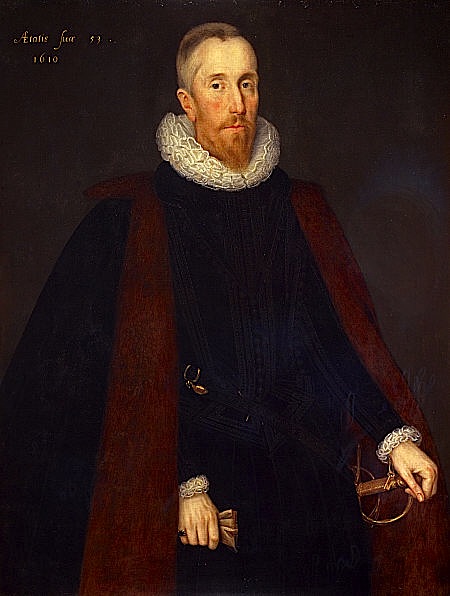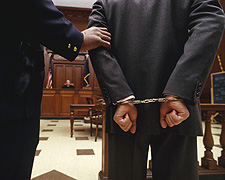|
Scots Family Law
Scots family law is the body of laws in Scotland which regulate certain aspects of adult relationships and the rights and obligations in respect of children. Marriage and civil partnership Marriage There are two types of recognised marriage in Scotland, informal and formal. Both are equally valid under Scots law but, as of 4 May 2006, only formal marriages can now be contracted in Scotland. Before the Marriage (Scotland) Act 1939, Scots law, following the principles of canon law, recognised three types of informal marriage. Marriage ''per verba de praesenti'' was constituted where the parties, without any need of a witness, made a mutual declaration to take each other as husband and wife. Marriage ''per verba de futuro subsequente copula'' was constituted when the parties, having agreed to marry on a future date, had sex. It has not been possible to form either of these irregular marriages since 1 July 1940. Marriage by cohabitation with habit and repute was constituted when th ... [...More Info...] [...Related Items...] OR: [Wikipedia] [Google] [Baidu] |
Body Of Laws In Scotland
Scots law () is the List of country legal systems, legal system of Scotland. It is a hybrid or mixed legal system containing Civil law (legal system), civil law and common law elements, that traces its roots to a number of different historical sources. Together with English law and Northern Ireland law, it is one of the three legal systems of the United Kingdom.Stair, General Legal Concepts (Reissue), para. 4 (Online) Retrieved 2011-11-29 History of Scots law, Early Scots law before the 12th century consisted of the different legal traditions of the various cultural groups who inhabited the country at the time, the Gaels in most of the country, with the Britons (historical), Britons and Anglo-Saxons in some districts south of the Forth and with the Scandinavian Scotland, Norse in the islands and north of the River Oykel. The introduction of feudalism from the 12th century and the expansion of the Kingdom of Scotland established the modern roots of Scots law, which was gradually i ... [...More Info...] [...Related Items...] OR: [Wikipedia] [Google] [Baidu] |
Judges Of Scotland
The judiciary of Scotland are the judicial office holders who sit in the courts of Scotland and make decisions in both civil and criminal cases. Judges make sure that cases and verdicts are within the parameters set by Scots law, and they must hand down appropriate judgments and sentences. Judicial independence is guaranteed in law, with a legal duty on Scottish Ministers, the Lord Advocate and the Members of the Scottish Parliament to uphold judicial independence, and barring them from influencing the judges through any form of special access. The Lord President of the Court of Session is the head of Scotland's judiciary and the presiding judge of the College of Justice (which consists of the Court of Session and High Court of Justiciary.) As of May 2016, the Lord President was Lord Carloway, who was appointed in December 2015 having previously served as Lord Justice Clerk. The Lord President is supported by the Judicial Office for Scotland which was established on 1 April ... [...More Info...] [...Related Items...] OR: [Wikipedia] [Google] [Baidu] |
Lease
A lease is a contractual arrangement calling for the user (referred to as the ''lessee'') to pay the owner (referred to as the ''lessor'') for the use of an asset. Property, buildings and vehicles are common assets that are leased. Industrial or business equipment are also leased. Basically a lease agreement is a contract between two parties: the lessor and the lessee. The lessor is the legal owner of the asset, while the lessee obtains the right to use the asset in return for regular rental payments. The lessee also agrees to abide by various conditions regarding their use of the property or equipment. For example, a person leasing a car may agree to the condition that the car will only be used for personal use. The term rental agreement can refer to two kinds of leases: * A lease in which the asset is tangible property. Here, the user '' rents'' the asset (e.g. land or goods) ''let out'' or ''rented out'' by the owner (the verb ''to lease'' is less precise because it can r ... [...More Info...] [...Related Items...] OR: [Wikipedia] [Google] [Baidu] |
Common-law Marriage In The United States
Common-law marriage, also known as sui juris marriage, informal marriage, marriage by habit and repute, or marriage in fact is a form of irregular marriage that survives only in seven U.S. states and the District of Columbia along with some provisions of military law; plus two other states that recognise domestic common law marriage after the fact for limited purposes. The term ''common law marriage'' is often used colloquially or by the media to refer to cohabiting couples, regardless of any legal rights that these couples may or may not have, which can create public confusion both in regard to the term and in regard to the legal rights of unmarried partners. Origin of common-law marriage The origins of common-law marriage are uncertain. It is arguably the original form of marriage, in which a couple took up residency together, held themselves out to the world as a married couple, and otherwise behaved as a married couple. It has been gradually abolished in Western nation states ... [...More Info...] [...Related Items...] OR: [Wikipedia] [Google] [Baidu] |
Common-law Marriage
Common-law marriage, also known as non-ceremonial marriage, marriage, informal marriage, or marriage by habit and repute, is a legal framework where a couple may be considered married without having formally registered their relation as a civil or religious marriage. The original concept of a "common-law marriage" is one considered valid by both partners, but not formally recorded with a state or religious registry, nor celebrated in a formal civil or religious service. In effect, the act of the couple representing themselves to others as being married and organizing their relation as if they were married, means they are married. The term ''common-law marriage'' (or similar) has wider informal use, often to denote relations that are not legally recognized as marriages. It is often used colloquially or by the media to refer to cohabiting couples, regardless of any legal rights or religious implications involved. This can create confusion in regard to the term and to the legal ri ... [...More Info...] [...Related Items...] OR: [Wikipedia] [Google] [Baidu] |
Annulment (Catholic Church)
In the Catholic Church, a declaration of nullity, commonly called an annulment and less commonly a decree of nullity, and by its detractors, a "Catholic divorce", is an ecclesiastical tribunal determination and judgment that a marriage was invalidly contracted or, less frequently, a judgment that ordination was invalidly conferred. A matrimonial nullity trial, governed by canon law, is a judicial process whereby a canonical tribunal determines whether the marriage was void at its inception (''ab initio''). A "Declaration of Nullity" is not the dissolution of an existing marriage (as is a dispensation from a marriage ''ratum sed non consummatum'' and an "annulment" in civil law), but rather a determination that consent was never validly exchanged due to a failure to meet the requirements to enter validly into matrimony and thus a marriage never existed. The Catholic Church teaches that, in a true marriage, one man and one woman become "one flesh" before the eyes of God. Various i ... [...More Info...] [...Related Items...] OR: [Wikipedia] [Google] [Baidu] |
Circumstantial Evidence
Circumstantial evidence is evidence that relies on an inference to connect it to a conclusion of fact—such as a fingerprint at the scene of a crime. By contrast, direct evidence supports the truth of an assertion directly—i.e., without need for any additional evidence or inference. Overview On its own, circumstantial evidence allows for more than one explanation. Different pieces of circumstantial evidence may be required, so that each corroborates the conclusions drawn from the others. Together, they may more strongly support one particular inference over another. An explanation involving circumstantial evidence becomes more likely once alternative explanations have been ruled out. Circumstantial evidence allows a trier of fact to infer that a fact exists. In criminal law, the inference is made by the trier of fact to support the truth of an assertion (of guilt or absence of guilt). Reasonable doubt is tied into circumstantial evidence as that evidence relies on inferen ... [...More Info...] [...Related Items...] OR: [Wikipedia] [Google] [Baidu] |
Adultery
Adultery (from Latin ''adulterium'') is extramarital sex that is considered objectionable on social, religious, moral, or legal grounds. Although the sexual activities that constitute adultery vary, as well as the social, religious, and legal consequences, the concept exists in many cultures and is similar in Christianity, Judaism and Islam. Adultery is viewed by many jurisdictions as offensive to public morals, undermining the marriage relationship. Historically, many cultures considered adultery a very serious crime, some subject to severe punishment, usually for the woman and sometimes for the man, with penalties including capital punishment, mutilation, or torture. Such punishments have gradually fallen into disfavor, especially in Western countries from the 19th century. In countries where adultery is still a criminal offense, punishments range from fines to caning and even capital punishment. Since the 20th century, criminal laws against adultery have become controversi ... [...More Info...] [...Related Items...] OR: [Wikipedia] [Google] [Baidu] |
Defendant
In court proceedings, a defendant is a person or object who is the party either accused of committing a crime in criminal prosecution or against whom some type of civil relief is being sought in a civil case. Terminology varies from one jurisdiction to another. In Scots law, the terms "accused" or "panel" are used instead in criminal proceedings and "defender" in civil proceedings. Another term in use is "respondent". Criminal defendants In a criminal trial, a defendant is a person accused ( charged) of committing an offense (a crime; an act defined as punishable under criminal law). The other party to a criminal trial is usually a public prosecutor, but in some jurisdictions, private prosecutions are allowed. Criminal defendants are often taken into custody by police and brought before a court under an arrest warrant. Criminal defendants are usually obliged to post bail before being released from custody. For serious cases, such as murder, bail may be refused. Defendants must ... [...More Info...] [...Related Items...] OR: [Wikipedia] [Google] [Baidu] |
Pursuer
A plaintiff ( Π in legal shorthand) is the party who initiates a lawsuit (also known as an ''action'') before a court. By doing so, the plaintiff seeks a legal remedy. If this search is successful, the court will issue judgment in favor of the plaintiff and make the appropriate court order (e.g., an order for damages). "Plaintiff" is the term used in civil cases in most English-speaking jurisdictions, the notable exceptions being England and Wales, where a plaintiff has, since the introduction of the Civil Procedure Rules in 1999, been known as a "claimant" and Scotland, where the party has always been known as the "pursuer". In criminal cases, the prosecutor brings the case against the defendant, but the key complaining party is often called the "complainant". In some jurisdictions, a lawsuit is commenced by filing a summons, claim form or a complaint. These documents are known as pleadings, that set forth the alleged wrongs committed by the defendant or defendants with a ... [...More Info...] [...Related Items...] OR: [Wikipedia] [Google] [Baidu] |
Gender Recognition Act 2004
The Gender Recognition Act 2004 is an act of the Parliament of the United Kingdom that allows people who have gender dysphoria to change their legal gender. It came into effect on 4 April 2005. Operation of the law The Gender Recognition Act 2004 enables people to apply to receive a Gender Recognition Certificate (GRC). A Gender Recognition Certificate is the document issued that shows that a person has satisfied the criteria for legal recognition in the acquired gender. The act gives people with gender dysphoria legal recognition as members of the sex appropriate to their gender identity allowing them to acquire a Gender Recognition Certificate. People whose birth was registered in the United Kingdom or abroad with the British authorities are able to obtain a birth certificate showing their recognised legal sex. People granted a full GRC are from the date of issue, considered in the eyes of the law to be of their "acquired gender" in most situations. Two main exceptions to ... [...More Info...] [...Related Items...] OR: [Wikipedia] [Google] [Baidu] |



